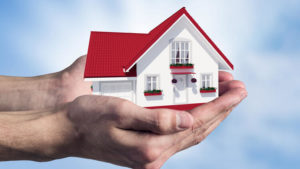What are the Points to Consider When Buying a Housing? (Part 2)
General Architectural Features
- Does the building have an approved architectural project?
- Have any changes been made to the building that were not in the original architectural project? (If yes, learn the reason for such changes) Expert support is required.
- Are the appearance and interior spaces of the building satisfying you in terms of aesthetics?
- Is the house suitable to meet your needs in the near future as well as your present needs? Housing plan, this etc. does it allow you to make new adjustments in a situation? (For example, consider the possibility of adding new members to your family.)
- Is the residence suitable for use by a disabled or elderly person? (For example, make sure that the stairway landings, corridor widths and other relevant spaces are suitable for a wheelchair to enter / return) Expert support is required.
- Are the places where you spend most of your time getting enough daylight? (For example, can you sit in the middle of the day without using artificial lighting?)
- Elevators, generators, etc. in the common areas of the building. does the noise of the devices prevent you from sleeping / working?
- Is the number of rooms in the residence sufficient to meet your needs? Is the house plan suitable for placing your furniture? (Make sure that the size of the rooms and the indentations / protrusions on the walls will not cause problems in placing your furniture.)
- Is the number of bathrooms / WCs in the residence sufficient to meet your needs?
- Is the bathroom / WC suitable for use by a disabled or elderly person? expert support is required.
- Chest room, cupboard etc. in the residence. Is the number and size of areas sufficient to meet your needs?
- If the building is higher than five floors, is there an elevator? (Current regulations require elevators in buildings above five floors.)
- Is the elevator suitable for the use of tools such as stretchers and wheelchairs in an emergency? Need expert support
- Is there a garbage chute in the residence?
- Are balcony and stair railings dangerous? (For example, does the railings allow small children to pass through? Can it be used as a ladder by children? Is the height of the railing less than 90 cm?)
- Is there a ramp at the entrance of the building to be used when necessary?
- Have eaves and windbreakers considered at the entrance of the building to protect you from external influences such as snow, rain and wind?
- Is the building entrance designed and illuminated in such a way that you can enter without fear at midnight and deter malicious strangers?
- Is there a place of shelter in the building that complies with current regulations? expert support is required.
- Are there non-residential storage areas? (For example, is there a section in the basement for storage purposes?)
- Are the entrance and exit of the basement controlled? (For example, can you be sure of the safety of the items you left in the basement?)
- Is it easy to access devices such as water, electricity and gas meters?
- Has the building been landscaped?
- Does the building have a safe and sufficient car park / garage? (For example, have measures been taken to prevent foreign cars from parking?)
- Is there an adequate lighting system in the car park / garage?
- Are there common spaces in the building where children can play safely and where residents can come together?
Building Environment
- Are vehicles parked in front of the building causing problems for you? (For example, does it prevent you from taking advantage of daylight or create noise?) Do neighboring buildings or natural barriers around the building prevent the residence from making sufficient use of sunlight?
- Are public spaces and building areas separated from each other?
- Is there a parking lot where your visitors can park their cars?
- Do you know how to access public transport in a reasonable time?
- Are there playgrounds where your children can spend time nearby?
- Is there a view of the house?
- Is there a possibility that the view of the residence will be obscured in the future?
- Are there any green areas in the vicinity where you can spend time?
- Are shopping centers easily accessible?
- Is the distance between housing and, if any, the school where the child will receive education appropriate?
- Is the distance between your home and workplace appropriate?
- Are health services easily accessible?
- Cinema theater and so on. Are cultural services such as easily accessible?
- Are postal / cargo services easily accessible?
- Can fire brigade and ambulance vehicles have easy access to the house in an emergency?
- Do the garbage storage areas of the building disturb the eyes of the people passing by or your neighbors?
- Is the building safe against theft (Find out about the crime rates in the area where the building is located.)
- Are the pavements around the building smooth and sound?
- Does rain and waste water around the building easily go away by itself?
- In the immediate vicinity of the building, there are high voltage lines etc. that may affect human health. are there elements?
- Are there any sources of noise or pollution such as highways, airports, industrial production facilities in the immediate vicinity?
Structural System and Earthquake Resistance
- Does the building have an approved structural system project?
- Are there any differences between the existing carrier system of the building and the carrier system envisaged in the project? Expert support is required.
- Did you get information about the earthquake-safety of the building? (Have the building inspected by an expert and learn about the “regularity” of the carrier system and other features that affect earthquake resistance.
- Protrusions in the building, gaps opened with subsequent intervention, removed walls, whether there is a basement, use of ready-mixed concrete, measures taken against water, the condition of other buildings in the vicinity, etc. Many factors will affect the earthquake safety of the building positively / negatively) Expert support is required.
- Does the construction of the building comply with the current earthquake regulations? expert support is required.
- Are there any signs of previous repairs in the building’s carrier system? (If done, find out the causes and results of the repair). Expert support is required.
- Did you get information about the ground conditions of the building? (If the building has a floor report, consult an expert with this) Expert support is required.
- Are there video footage / photos taken during the construction of the building? (It can make it easier for you to ask questions to experts about the building’s carrier system)
- Have the foundations been waterproofed? Expert support is required.


